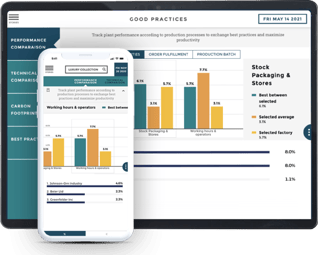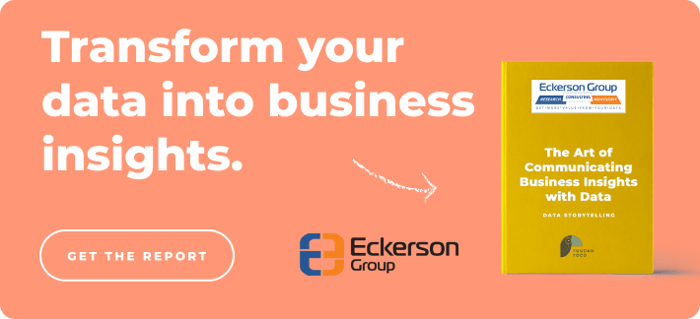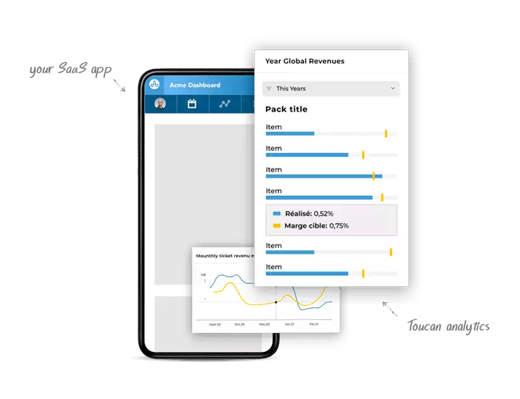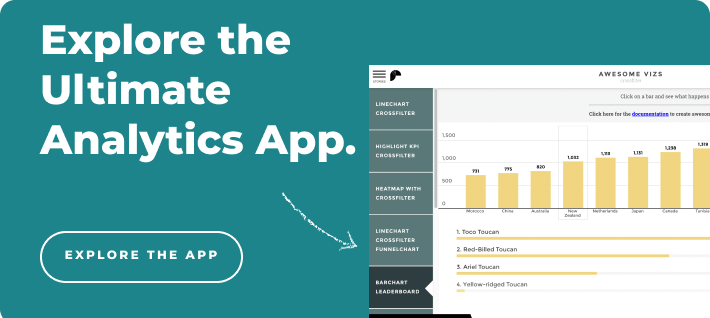What is OEM Software?
OEM stands for “original equipment manufacturer”, and OEM software refers to software that is sold to software and/or hardware manufacturers wholesale and which is then bundled within existing offerings.
While OEM software is becoming increasingly common in the modern context as a foundational component of business analytics, you’re probably more familiar with OEM software than you might have thought: all of the third-party software that comes built-in with phones, tablets, PCs, printers and scanners are all examples of OEM software (you can find more examples here).
In the SaaS context, OEM software has become particularly relevant because it helps organizations accelerate the growth and maturity of their products. It enables today's teams to integrate built-in solutions that are fit for highly unique and specialized use-cases without the need to invest the time and money, which would otherwise be necessary, in drawn-out custom development cycles.
Put simply, businesses can leverage OEM software to outsource development work to specialists, enabling their own teams to focus on their core competencies (all without compromising on the product that’s actually delivered).
OEM software gives SaaS companies access to built-in, customizable, scalable solutions that reduce their TCO (total cost of ownership) and integrate directly within their existing infrastructure.
A specific example of OEM in the SaaS space is the inclusion of embedded analytics and OEM business intelligence tools in commonly used applications (think CRMs or ERP suites, or portals like intranets and extranets).
Incorporating relevant data and analytics inside applications helps users work smarter and more efficiently by solving high-value business problems. Perhaps more importantly, embedded analytics are used as a tool to make data accessible to non-technical users.
What are some ways you can use OEM Software?

One of the most common examples of leveraging OEM software to optimize existing business functions is through the use of embedded analytics, as we mentioned above.
As more and more companies are necessitated to become data-driven, there’s a growing need for actionable, insightful analytics that are built to be adopted by everyone, not just data experts. At Toucan, we call this Guided Analytics.
Even if businesses are flush with extra resources, building (and maintaining) a complete business intelligence solution can be a huge headache and distract teams from focusing on their core products.
By embedding analytics, teams are able to reduce costs and still deliver advanced solutions that help their business run more smoothly.
"Embedded analytics" is the term used to refer to instances where third-party software vendors deliver real-time reporting, data visualizations, and/or advanced analytics directly into a business’ existing application.
The data is managed by an analytics platform, and the visualizations and reports are integrated directly within that application to generate actionable, usable insights for business users.
Offering analytics solutions as part of existing software applications improves the application in a number of ways, including:
- Increasing product value
- Improving the user experience
- Making data accessible for any business user (not just data scientists and experts)
Examples of OEM software
One example of OEM analytics software? Toucan's embedded analytics.
The Toucan platform allows easy embedding into SaaS products using either web components or iFrames and can be performed by even non-expert users; changes can be moved from staging to production with a single toggle and the platform contains robust adoption management tools for on-boarding and the automation of core user management tasks.
Extensive white-labeling customization capabilities allow customers to make the end experience look and feel like an extension of the company brand and include color palettes, typefaces, languages, logos, and background imagery.
From healthcare applications to IoT devices, and for non-technicals and data experts alike, Toucan can be used and accessed any time, anywhere.
To dive deeper into all things embedded analytics, including what to consider when purchasing a solution, there are loads of great resources and guides to embedded solutions that you can explore.
Speaking of which...
What to consider when purchasing OEM software
There are many things to consider when purchasing OEM software, with the wrong decision having the potential to set you two steps back. Here are some highlights:
-
Self-Service Capabilities: these are the core capabilities that should be made available to all your users, even the non tech-savvy ones. u will make available to your non-technical users. These may include the interactive and analytical functions they can perform.
-
Scalability: while the solution you choose will need connect and integrate well with your current environment, it should also be flexible enough to meet future demands as your offering evolves.
-
Integration: one of the major ways OEM tools differ from standalone projects is the need to integrate within the application environment. This means providing a white labeled solution to meet evolving business requirements.
-
Deployment: since time-to-value is so critical to the success of any OEM project, having a development environment where you can create, style, embed, deploy, and iterate on your OEM functionality will enable your team to deliver the features that users want.
-
Customer support: choosing the right partner is not simply about the technology; it’s also about finding the level of expertise you require for training, support, and services, as well as aligned business terms that ensure shared success.




